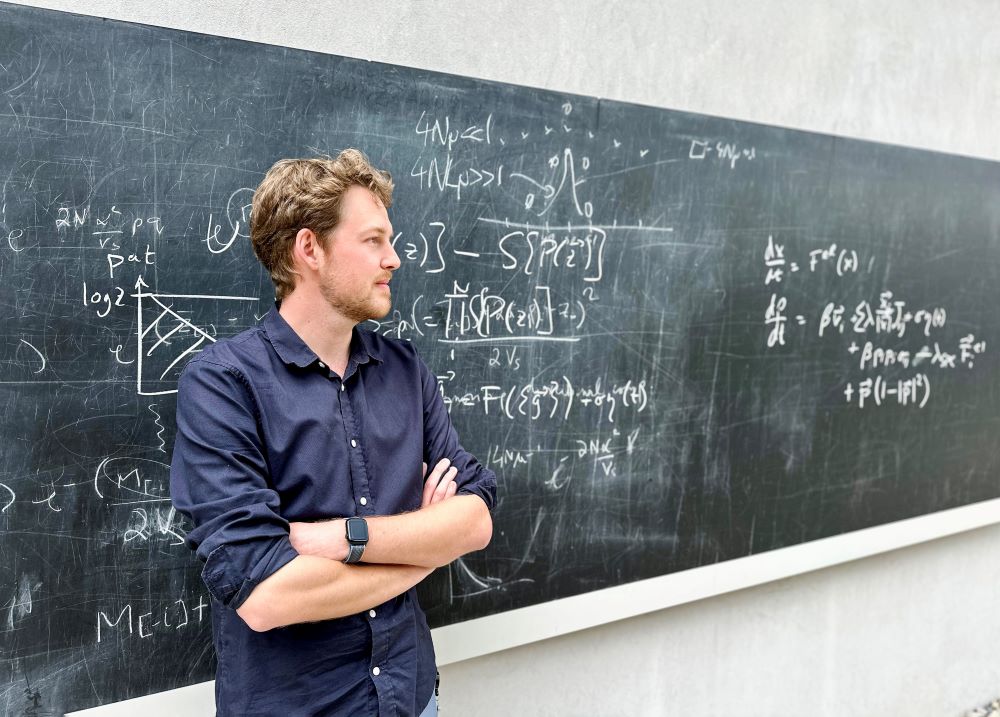We reach more than 65,000 registered users in Dec!! Register Now

New mathematical framework sheds light on how cells communicate to form embryo
- June 30, 2025
- 1 Views
- 0 Likes
- 0 Comment
Biological processes depend on puzzle pieces coming together and interacting. Under specific conditions, these interactions can create something new without external input. This is called self-organization, as seen in a school of fish or a flock of birds. Interestingly, the mammalian embryo develops similarly. In PNAS, David Brückner and Gašper Tkačik from the Institute of Science and Technology Austria (ISTA) introduce a mathematical framework that analyzes self-organization from a single cell to a multicellular organism.
When an embryo develops, many types of cells with different functions need to be generated. For example, some cells will become part of the eye and record visual stimuli, while others will be part of the gut and help digest food. To determine their roles, cells are constantly communicating with each other using chemical signals.
Thanks to this communication, during development, everything is well synchronized and coordinated, and yet there is no central control responsible for this. The cell collective is self-organized and orchestrated by the interactions between the individuals. Each cell reacts to signals of its neighbors. Based on such self-organization, the mammalian embryo develops from a single fertilized egg cell into a multicellular organism.
David Brückner and Gašper Tkačik from the Institute of Science and Technology Austria (ISTA) have now established a mathematical framework that helps analyze this process and predict its optimal parameters. Published in PNAS, this approach represents a unifying mathematical language to describe biological self-organization in embryonic development and beyond.
The self-assembling embryo
In nature, self-organization is all around us: we can observe it in fish schools, bird flocks, or insect collectives, and even in microscopic processes regulated by cells. NOMIS fellow and ISTA postdoc David Brückner is interested in getting a better understanding of these processes from a theoretical standpoint. His focus lies on embryonic development—a complex process governed by genetics and cells communicating with each other.
Bridging expertise
“Information theory is a universal language to quantify structure and regularity in statistical ensembles, which are a collection of replicates of the same process. Embryonic development can be seen as such a process that reproducibly generates functional organisms that are very similar but not identical,” says Gašper Tkačik, professor at ISTA and expert in this field. For a long time, Tkačik has been studying how information gets processed in biological systems, for instance in the fly embryo. “In the early fly embryo, patterns are not self-organized,” he continues. “The mother fly puts chemicals into the egg that instruct the cells on what actions to take.” As the Tkačik group had already developed a framework for this system, Brückner reached out to develop one for the mammalian embryo as well. “With Gašper’s expertise in information theory, we were able to put it together,” Brückner adds excitedly.
List of Referenes
- David B. Brückner, Gašper Tkačik. Information content and optimization of self-organized developmental systems. Proceedings of the National Academy of Sciences, 2024; 121 (23) DOI: 10.1073/pnas.2322326121
Cite This Article as
No tags found for this post









